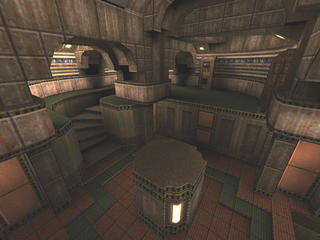Believe in yourself: Be confident. Make sure you think you are a damn good salesperson. No, screw that. Make sure you simply KNOW you are a damn good salesperson. Make sure that thought is stuck in your head so well it makes you almost arrogantly confident. A wise teacher once told me: "A sale is born in the head of the salesperson. It grows and grows until the salesperson can materialise that sale in the real world.
Believe in your product: Take a pen and a list of paper. Write down every single good thing about the product/service you are offering. Always keep that list close to you. When in doubt, look at that list. If you can't make yourself believe your product is damn good, you are bound to have trouble convincing others that it is.
Think of "YES things", not of "NO things": Only think of "YES things" during a sales negotiation. Think of all the good things that will happen to your customer WHEN (not if) he takes up your great offer. When you find yourself thinking "what will be this client's excuse for not taking up my offer", it's time to go out, walk around the city some, sit down in the park, close your eyes and have a cigarette if you are into that. Clear your mind. No go back and show the world you are a TRUE WINNER.
Set clear goals: When you wake up and go to work, don't think "Today, I will do my best". That's apologising to yourself in advance. Set a goal for the day, a goal that is high but one you can archive. Work towards that goal and reward yourself when you reach it: go to the movies, get some nice food or do something else that really pleases you. Set goals for the current week and current month. Set long term goals. The higher the goal is, the bigger reward you can justify for yourself.
Don't oversell: When negotiating a sale, don't spend an excessive amount of time praising your product or service. If you do, the customer is likely to think that "There must be SOME downside to all this if he's trying so hard. If this product was actually good, he'd probably already ask me where I want it delivered". When proposing a deal/sale to the customer, timing is vital. Is the customer does not look or sound interested in your product, just plain ask him why not. If you cannot convince your customer in a reasonably short amount of time, wish him a good day, forget his existence and make your next call. Your time is money.
Believe in your product: Take a pen and a list of paper. Write down every single good thing about the product/service you are offering. Always keep that list close to you. When in doubt, look at that list. If you can't make yourself believe your product is damn good, you are bound to have trouble convincing others that it is.
Think of "YES things", not of "NO things": Only think of "YES things" during a sales negotiation. Think of all the good things that will happen to your customer WHEN (not if) he takes up your great offer. When you find yourself thinking "what will be this client's excuse for not taking up my offer", it's time to go out, walk around the city some, sit down in the park, close your eyes and have a cigarette if you are into that. Clear your mind. No go back and show the world you are a TRUE WINNER.
Set clear goals: When you wake up and go to work, don't think "Today, I will do my best". That's apologising to yourself in advance. Set a goal for the day, a goal that is high but one you can archive. Work towards that goal and reward yourself when you reach it: go to the movies, get some nice food or do something else that really pleases you. Set goals for the current week and current month. Set long term goals. The higher the goal is, the bigger reward you can justify for yourself.
Don't oversell: When negotiating a sale, don't spend an excessive amount of time praising your product or service. If you do, the customer is likely to think that "There must be SOME downside to all this if he's trying so hard. If this product was actually good, he'd probably already ask me where I want it delivered". When proposing a deal/sale to the customer, timing is vital. Is the customer does not look or sound interested in your product, just plain ask him why not. If you cannot convince your customer in a reasonably short amount of time, wish him a good day, forget his existence and make your next call. Your time is money.



